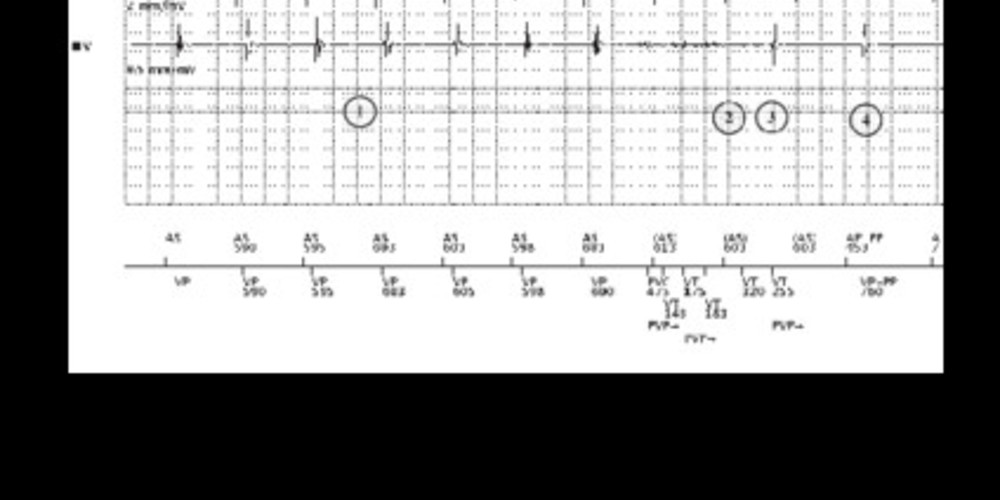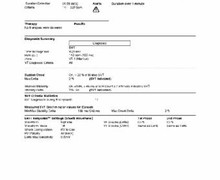Oversensing of diaphragmatic myopotentials
Tracing
Manufacturer Boston Scientific
Device PM
Field Sensing
N° 5
Patient
- 68-year-old woman
- Ingenio dual-chamber pacemaker (Boston Scientific) for complete atrioventricular block
- Right ventricular lead positioned in the right ventricular floor
- Ventricular sensitivity programmed on AGC (automatic gain control)
- Multiple episodes of lipothymia
- Episode of nonsustained VT episodes recorded in the device memory

Graph and trace
- Atrial sensing and ventricular pacing
- Ventricular oversensing of small amplitude signals with intervals classified as VT
- Ventricular escape
- Following ventricular escape, interruption of oversensing and resumption of ventricular pacing
Comments
- This tracing reveals an oversensing of diaphragmatic myopotentials by the right ventricular lead
- The use of high auto-adaptive sensitivity (automatic gain control) increases the risk of diaphragmatic myopotential oversensing at the end of diastole when sensitivity is maximal
- Oversensing of diaphragmatic myopotentials is rare although has been increasingly observed when automatic gain control is programmed in patients implanted with a lead positioned in the right ventricular floor near the diaphragmatic muscle
- Diaphragmatic myopotentials most often correspond to high rate signals of very low amplitude
- The two main characteristics of this type of signal are that their amplitude varies with the respiratory cycle and that they can be reproduced by specific maneuvers (deep inspiration, Valsalva, forced cough)
- Oversensing occurs initially at the end of diastole when sensitivity is maximal
- Sensing of the true R wave (of high amplitude) modifies the sensitivity level and interrupts oversensing of these small signals
- Prolonged oversensing only occurs in pacemaker-dependent patients (absence of intrinsic R waves, maximum permanent sensitivity level)
Other articles that may be of interest to you





